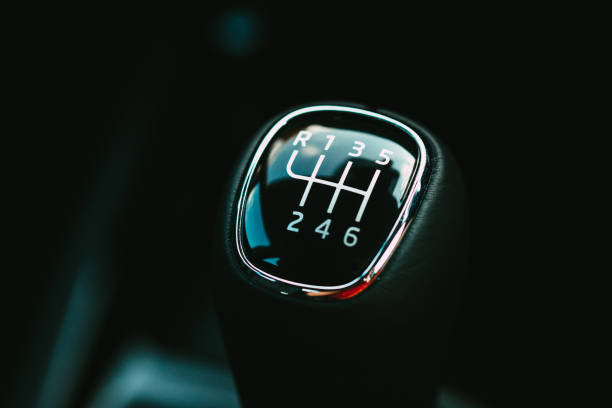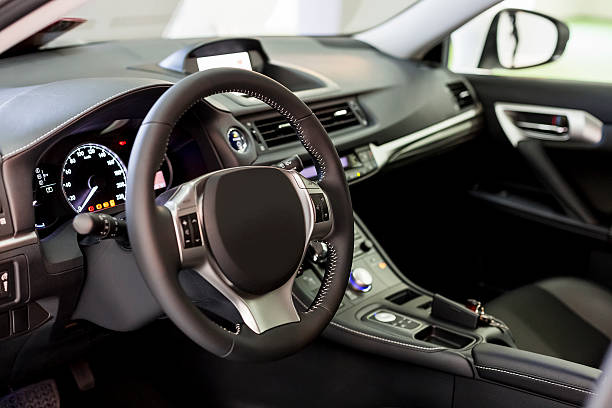As you slide into the driver’s seat and your hand grazes the gearshift, you may notice a letter that often goes unexplained in standard driving lessons—the mysterious ‘L’. It’s a symbol that appears across a multitude of vehicles, from the rugged off-roader to the family sedan, but “What Does The L Stand For In Cars?” This question unlocks a fundamental aspect of automotive functionality that many drivers are unaware of, despite its presence right beneath their fingertips.
With a deep well of automotive knowledge to draw from, this article is engineered to clarify the purpose and function of the ‘L’ setting found in the gear selection of many vehicles. Through our expertise, we will shift your understanding from a mere recognition of this letter to an appreciation of its practical application in enhancing your driving experience.
The ‘L’ on your gearshift is more than just a letter—it is an invitation to explore the capabilities of your vehicle and understand the mechanical symphony that occurs under the hood. This article will demonstrate the value of this knowledge by delving into the mechanics of how the ‘L’ position affects power, torque, and control, providing you with insights that could enhance your control and safety on the road.
As we drive through the explanations, we aim to engage your curiosity, encouraging you to delve deeper into the inner workings of your car. By the end of this article, the ‘L’ will no longer be a mere curiosity but a feature that you can use to your advantage, whether it’s navigating steep inclines, towing, or managing challenging driving conditions.
Buckle up and prepare to embark on a journey of discovery that will equip you with a richer understanding of your vehicle’s capabilities. Let’s gear up to unravel the mystery behind the ‘L’ in cars.
Contents
Why Understanding Gears Matters?

Having a solid grasp of how your car’s transmission and gears work gives you increased control and safety while driving. Here’s why it’s important:
- Improved Vehicle Control: Knowing how to properly use your gears, especially when accelerating, braking, or driving hills, gives you better control over your car in different conditions.
- Enhanced Safety: Choosing the right gear in slippery, wet, or icy conditions can help avoid skids and loss of control. Understanding when to use low gears adds protection.
So taking the time to learn about gears equals better, safer driving. Let’s start with how an automatic transmission works.
What Does A Car’s Transmission Do?
The transmission is responsible for transferring engine power to the wheels. It does this through different sized gear sets that give you different amounts of power at various speeds.
There are two main types of automatic transmissions:
- Torque Converter: Uses fluid coupling and gear sets to change ratios. Most common auto transmission.
- CVT: Uses pulleys and belt instead of gears to provide continuous, variable transmission ratios.
Manual transmissions work differently, using a clutch and shifter to manually change gears. We’ll focus on automatic transmissions in this article.
Now let’s review the functions of the different gears shown on your gear shift.
What Are The Other Gears (P, R, N, D)?
Most automatic gear shifts have the following gear options:
P – Park: Locks transmission in place to prevent wheels from turning. Use when parked.
R – Reverse: Allows car to move backwards. Engages reverse gear set.
N – Neutral: Disconnects transmission from wheels so they don’t turn. Use when idling.
D – Drive: Default gear for forward driving. Shifts through gear ranges automatically.
Now let’s talk about when and how to use that mysterious “L” gear.
How To Shift Into Low Gear In Automatic?
The L on your gear shift stands for “Low” gear. Here’s how to shift:
- Move gear shift lever to L position (left of D)
- Car will shift into lower gear range suitable for lower speeds
Using L gear is recommended for specific driving scenarios covered next.
When Should I Use “L” On The Gear Shift?
Activating L gear is handy for:
- Towing/Hauling: Provides extra torque and engine braking when pulling heavy loads.
- Slippery Conditions: More control on snow, ice, gravel, wet roads. Prevents gear shift “hunting.”
- Steep Hills: Maintains lower gear to climb inclines or descend safely utilizing engine braking.
The “L” provides access to lower gear ranges better suited for added control in these situations. Check your owner’s manual for how your car operates in this gear.
Now let’s take a closer look at your vehicle’s gear shift.
Your Vehicle’s Gearshift – An Overview
Your automatic gear shift allows selection of different transmission gears:
- The gear selector or shifter handle activates gearsets electronically.
- The gear range indicator shows the chosen gear: P, R, N, D, L.
- A lock-out requires pushing button/moving shifter to change out of P.
- The shift pattern varies by vehicle. S or straight patterns are common.
Now let’s review the purpose of each individual gear.
P, R, N, D, and L – The Gears of an Automatic Transmission
We’ll take a closer look at each gear:
P – Park:
- Locks front wheels to prevent rolling.
- Engages parking pawl in transmission.
- Use when starting engine and parking only.
R – Reverse:
- Engages reverse idler gear to allow backwards motion.
- Puts transmission in reverse gear range.
- Only shift to R when fully stopped.
N – Neutral:
- Disengages transmission from wheels.
- Use when idling or towing.
- Car can roll freely.
D – Drive:
- Default gear for forward driving.
- Shifts through multiple gear ranges automatically.
- Provides smooth acceleration and efficiency.
L – Low:
- Engages lower gear ranges.
- Prevents upshifting to higher gears.
- Used for added low-speed control.
Now that we’ve covered individual gears, let’s focus on the L gear specifically.
So What’s The “L” For?
The “L” gear on your automatic transmission stands for “Low.” Shifting into L selects a lower gear range to:
- Provide more power at lower speeds
- Limit the transmission from upshifting
This gives you better control, but limits top speed capability in L.
Does Your Car Shift Into Low Gear Automatically?
Most automatic cars will NOT shift into low gear ranges without manually moving the gear shift into the L position. However, some modern transmissions may automatically select lower gears when sensing conditions like:
- Ascending a steep hill
- Towing a trailer
- Heavy acceleration from stop
But for consistent low gear usage, it’s best to manually select L gear. Check your owner’s manual to see if your vehicle automatically downshifts.
Now let’s revisit when to use your L gear.
When Should You Use the “Low” Setting on Your Gearshift?

There are several driving scenarios where shifting into low gear can be advantageous:
Towing or Heavy Loads:
- Provides additional torque for hauling.
- Uses engine compression for added control.
Slippery Surfaces:
- Limits gear hunting on snow, ice, gravel.
- Smoother acceleration and braking control.
Steep Hills and Inclines:
- Maintains power climbing up hills.
- Allows engine braking descending downhill.
Off-Road Driving:
- Increased low-end torque for rough terrain.
- Allows higher RPMs for 4WD engagement.
The bonus control and torque from L gear really shines in these situations.
When NOT to Use “L” Gear
While L gear has benefits in specific scenarios, there are times when you should avoid using it:
- High Speed Driving: Remaining in low gear at higher speeds can lead to excessively high RPMs, increased fuel consumption, and possible engine damage over time.
- Normal Driving Conditions: Using L when not necessary creates a rougher ride and wastes fuel. Reserve L gear for when you really need the extra low-end control.
So it’s best to use your L gear judiciously and to shift out of it when no longer needed. Now let’s talk about a useful companion to low gear – engine braking.
Alternative Braking Techniques: Engine Braking vs. Standard Braking
One key benefit of selecting L gear is utilizing engine braking, especially when descending hills:
- Engine Braking: Compression of engine slows drive wheels via transmission. Less wear on brakes.
- Standard Braking: Brake pads friction creates heat to slow wheels. Can cause brake fade.
Using L gear to assist braking is smart, allowing breaks to cool. But don’t rely solely on engine braking to stop.
Safety Considerations When Using “L” Gear
When using your vehicle’s L gear, following some safety tips will ensure smooth operation:
- Refer to owner’s manual for any restrictions or speed limits in L gear.
- Accelerate gently – don’t lug the engine.
- Shift out of L when terrain or conditions flatten.
- Avoid prolonged use at highway speeds.
- Use both service brakes and L gear when descending hills.
Following the manufacturer’s instructions for L gear usage keeps you and your car safe.
Troubleshooting Transmission Issues (Basic Tips)
Some basic transmission issues related to gear shifting include:
Grinding Gears:
- Manual – Depressing clutch fully before shifting can help avoid grinding.
- Automatic – May indicate worn gear sets requiring repair.
Slipping Gears:
- Automatic – Transmission fluid change recommended if gears slip under acceleration.
Consult a certified mechanic for any persistent transmission problems. Proper maintenance and operation will maximize the lifespan of your vehicle’s transmission.
Understanding how and when to use your automatic transmission’s gears, especially the L gear, gives you enhanced control, safety and enjoyment behind the wheel. We hope this overview has helped demystify the purpose of the L on your gear shift.

Trayce served as a grassroots leader and activist in Texas as President of Dallas and Texas Eagle Forum.
Trayce is Mom Caucus Member, Texas Conservative Mamas, Texas Conservative Grassroots Coalition Leader, and Grassroots America Champion of Freedom Honoree.
She currently serves as the Eagle Forum National Issues Chair on Human Trafficking.
Trayce received a Bachelor’s Degree in Marketing from Texas A&M
Currently, she homeschools her youngest child age 13 and graduated her six oldest children, ages 31 to 19.







